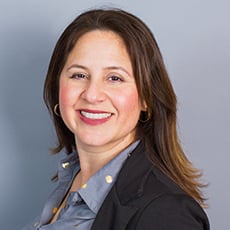
5 Ways to Capture Employees’ Attention This Open Enrollment
“Never in the history of humanity have we vomited more words in more places with more velocity.” That statement, taken from the book Smart Brevity1 by Jim VandeHei, Mike Allen, and Roy Schwartz, reminds me of how many notifications, emails, chimes, text messages, DMs, and pings I wake up to and experience throughout the day.
Smartphones and the internet have put information at our fingertips 24/7 at an alarmingly fast rate. Day and night, I’m inundated with communications demanding my attention. And it’s up to me to sift through it all and figure out what’s important, what can wait, and what can’t. This can be pretty overwhelming, especially on the days when I haven’t even had a cup of coffee before the pings begin.
And if I need answers now? I can get them! Not sure how to interpret lab results from recent bloodwork? I can google it. Need to know how to change the oil in my car? There’s a YouTube video to show me. Even social media channels like Instagram and TikTok are teaching me how to save more, pay down debt, and bake a cake from scratch.
Just take a look at these data points from Smart Brevity to get a sense of how much communication we have coming at us each day:
- People check their phones 344-plus times each day, about once every 4 minutes. But that is likely underreported and not a reflection of our true usage.
- People scan, not read, everything that pops up on their screens.
- It takes more than 20 minutes for people to refocus after a distraction.
- On average, people spend fewer than 15 seconds on web pages they click on.
- One study found that our brain decides in 17 milliseconds if we like what we just clicked.
- We share most stories without actually reading them.
This age of information is so intense that not only are we seeking information, but we’ve become dopamine addicted, craving that next ping and notification. And that makes it even more challenging for organizations to get their messages across to people. As benefits communicators, it’s key that we understand this dynamic, because to cut through the noise and capture employees’ attention, you have to know what’s behind it.
Here are 5 tips from Smart Brevity and Writing for Busy Readers2 to help you push past the distractions and reach your employees this open enrollment season.
1. Focus on One Person You Want to Target
Who is your target audience? Visualize that audience, down to the individual person, and how they will react to your communication. And if you have the option for personalization, use it. A personalized touch can go a long way to cutting through the communications clutter.
2. Pick the ONE Thing You Want Employees to Remember
In a world filled with too much information everywhere we turn, it’s even more crucial during open enrollment (and any important event) to focus on that one piece of information you need people to pay attention to. When you give them too much to digest, they get overwhelmed. And that leads to not reading the message or saving it for later and likely forgetting about it. Even worse: They may just tune you out entirely, since they don’t feel they can quickly and easily determine what it is you’re asking from them.
3. Write Like a Human, for Humans
This point is one of my favorites, because it’s so simple. Yet how many times have you opened an email or read an open enrollment guide that really didn’t sound the way you speak in everyday life? Complicated topics like benefits should be written in a way that sounds the way we all speak. People don’t have a lot of time to figure out what you want them to know, so you need to tell them in very simple language, without making them dig for the good stuff.
4. Think Visually, Always
How you package the message is extremely crucial. Since people are no longer reading, but instead only scanning, your message needs to be designed and presented in a way that is easy to scan. Words are only one part of your communications. Today’s world is extremely visual, and cutting through the noise and capturing your employees’ attention requires that you make your communications visually appealing in addition to timely, concise, and actionable. And this applies to all communication channels, whether they’re print pieces, web pages, or emails.
5. Less is More
Fewer words, fewer ideas introduced, even fewer requests can ensure that your benefits communications will resonate with your people and not fall flat. When you find yourself wanting to add more, just stop. Step away from the keyboard, put down the editing tools, and forget the need to add more to the message and to tell your people everything about the benefits you offer. Rather, review and ensure that the most important information is presented, and then direct employees to where they can find more details if they’re interested.
By following these 5 tips when crafting your open enrollment communications, you can cut through the noise, clear the clutter, and capture your employees’ attention.
We’re proud to work with organizations that value their people. If you want to learn more, we’d love to talk.
1. Jim VandeHei, Mike Allen, and Roy Schwartz, Smart Brevity: The Power of Saying More with Less, Workman Publishing Company, 2022.
2. Todd Rogers and Jessica Lasky-Fink, Writing for Busy Readers: Communicate More Effectively in the Real World, Dutton, 2023.
Read Next
Work with Us
We partner with organizations that value their people first. Let’s talk.

Alisha Berman, Senior Consultant, has more than 10 years of experience creating winning benefits communications strategies for her clients.
